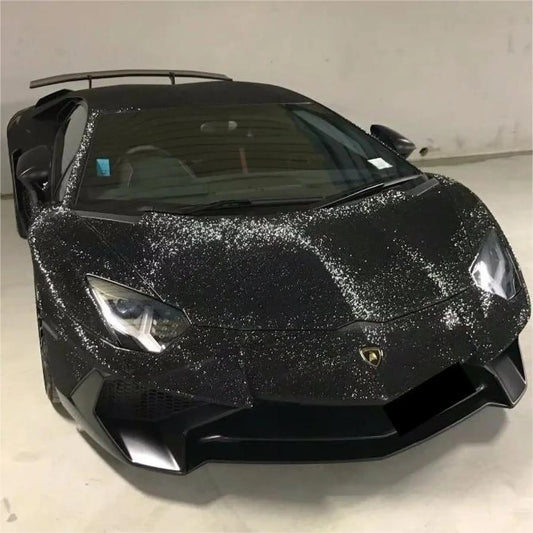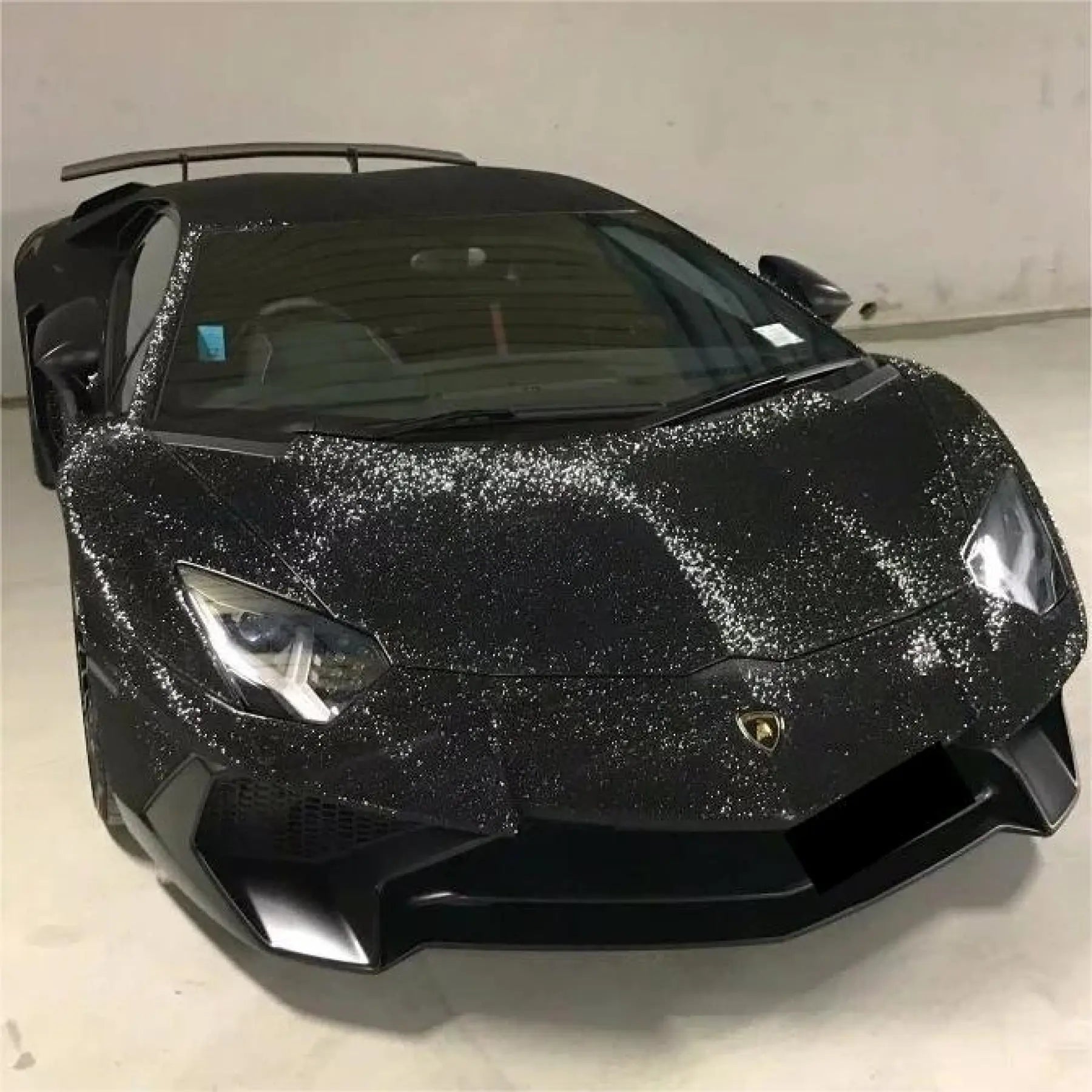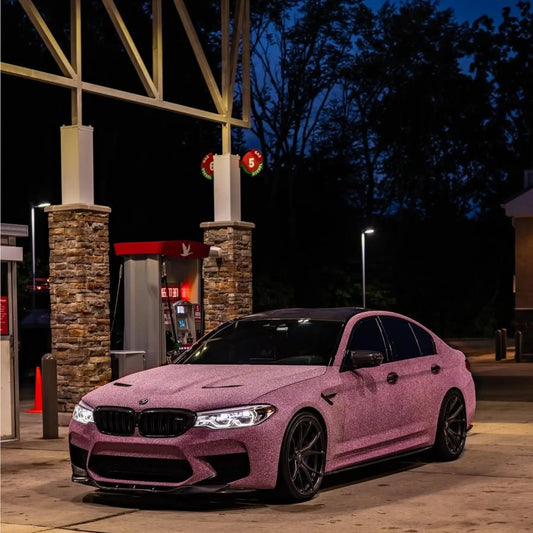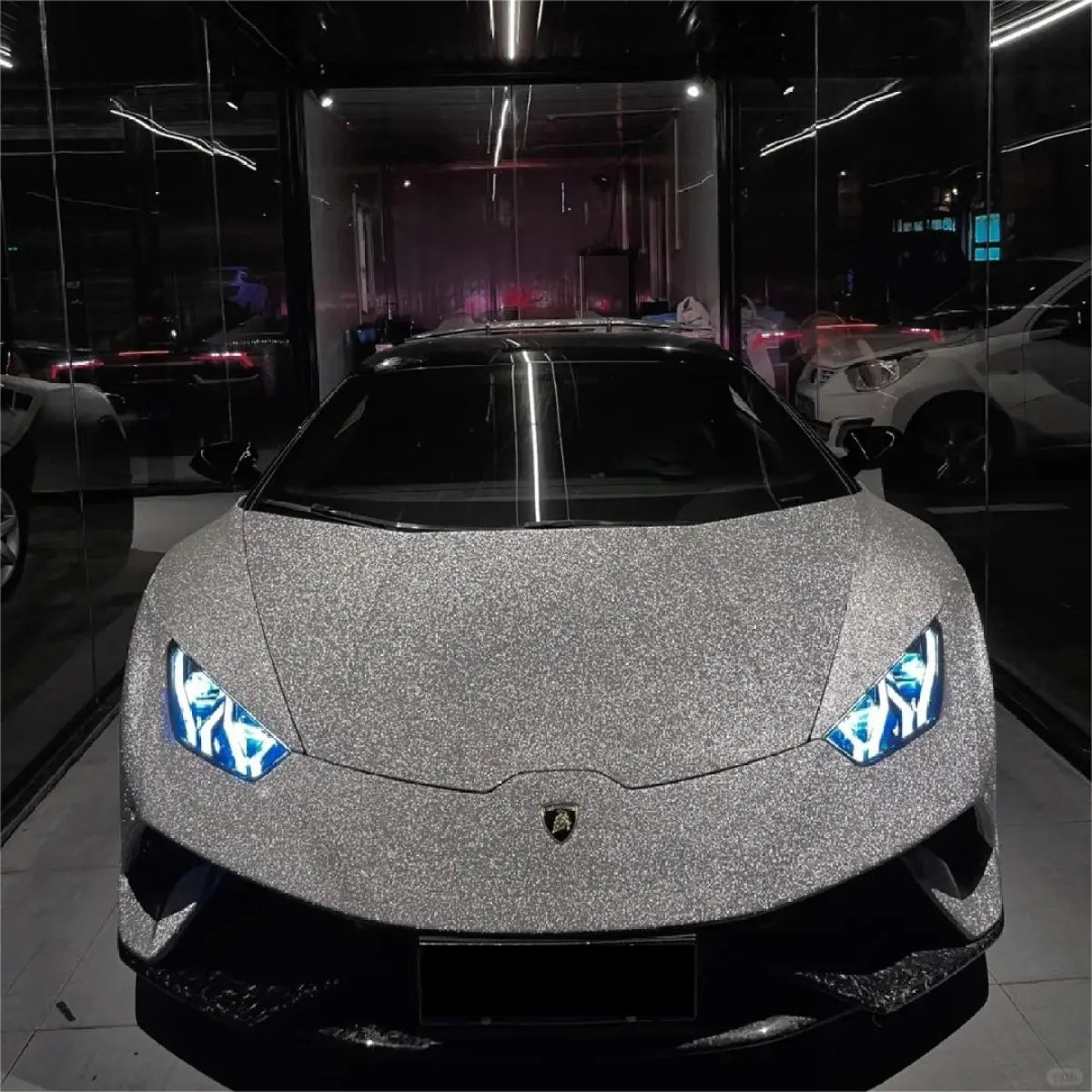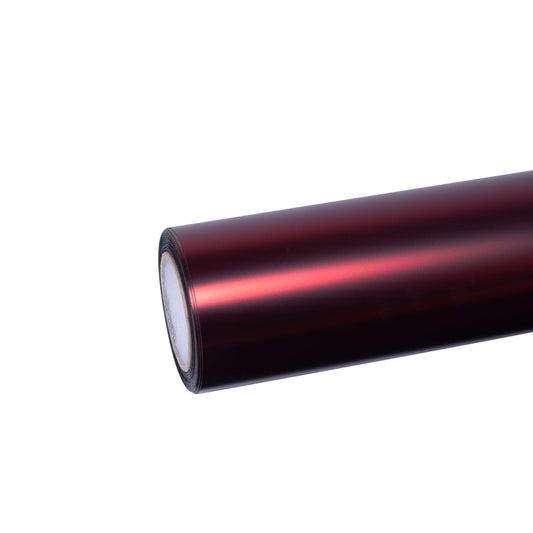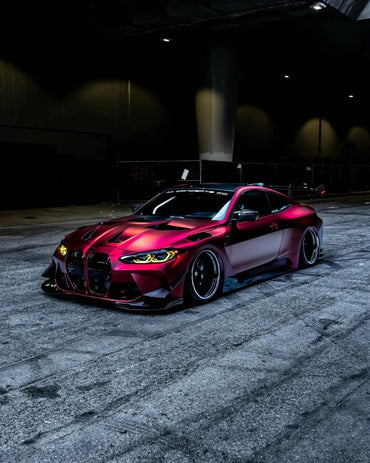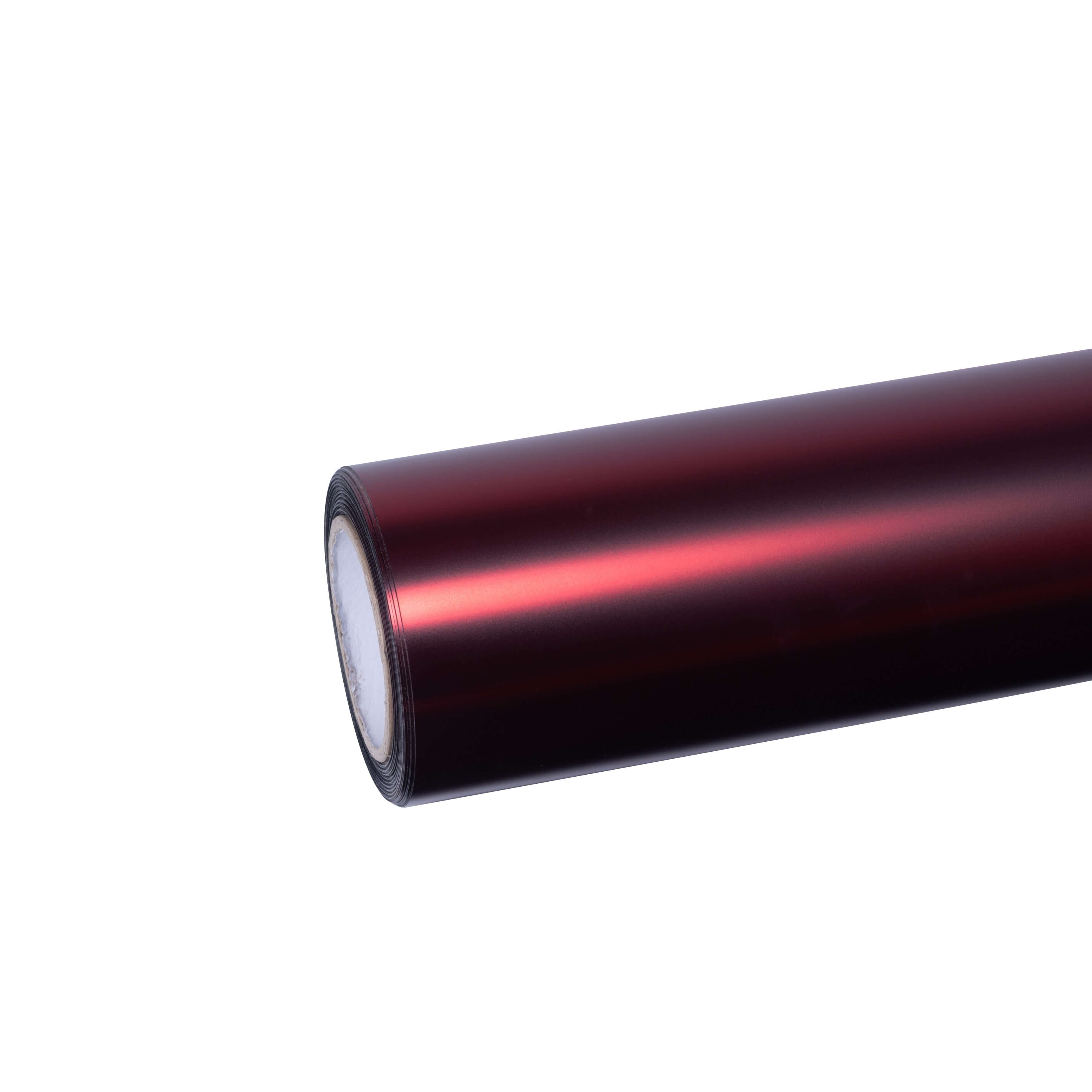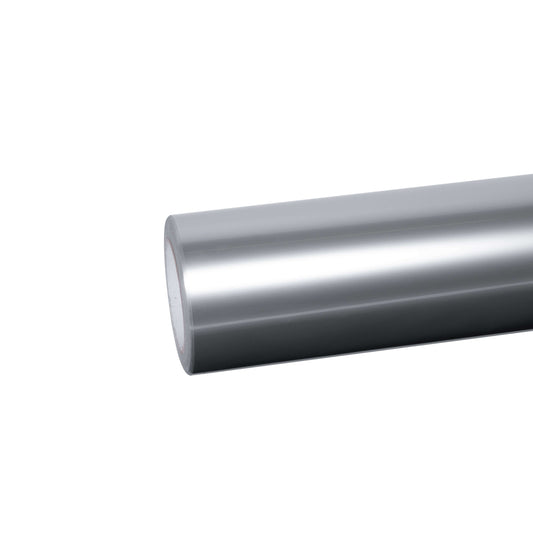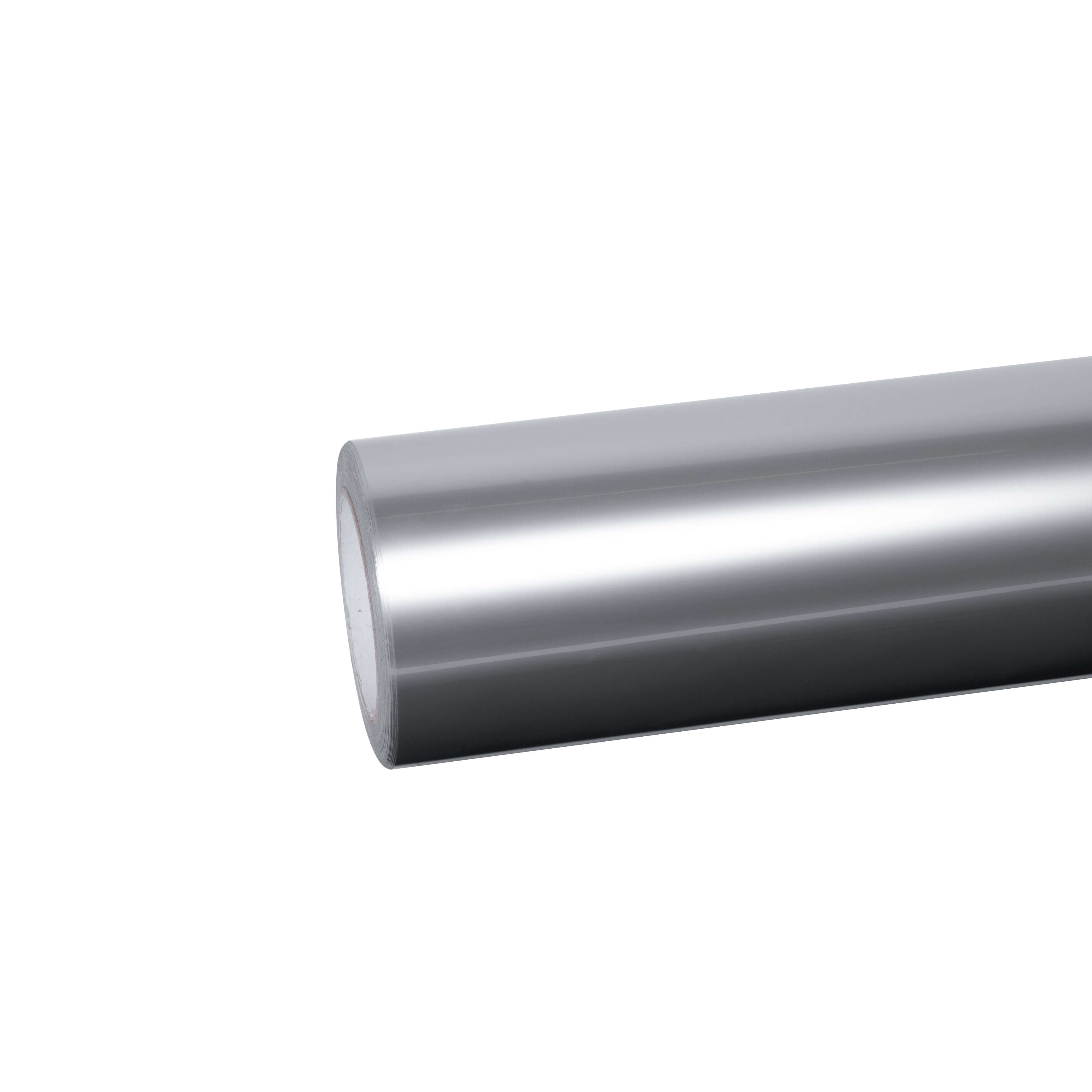Understanding Colored Paint Protection Film
Colored PPF represents the evolution of automotive protection, combining the durability of traditional thermoplastic polyurethane with aesthetic customization. Unlike clear PPF that simply protects your original paint, colored films allow you to completely transform your vehicle's appearance while maintaining superior defense against scratches, rock chips, UV rays, and environmental contaminants.
Modern colored PPF features self-healing technology, hydrophobic top coats, and UV-resistant properties that preserve color vibrancy. Whether you've selected glitter sparkle car wrap, metallic vinyl wrap, or rainbow laser vinyl wrap, understanding proper maintenance techniques protects both your investment and your vehicle's striking appearance.
Why Proper Maintenance Matters
Colored PPF requires more attention than clear film because any imperfections, stains, or damage become more visible on pigmented surfaces. Regular maintenance delivers multiple benefits:
Longevity: Proper care extends colored PPF lifespan from the typical 5 years to 10+ years, maximizing return on investment.
Color Preservation: UV protection and appropriate cleaning prevent fading, discoloration, and loss of vibrancy that degrades untreated films.
Protective Performance: Clean film maintains optimal self-healing properties and continues blocking environmental hazards effectively.
Aesthetic Appeal: Regular maintenance preserves that just-installed appearance, ensuring your vehicle turns heads every day.
Resale Value: Well-maintained colored PPF demonstrates proper vehicle care, increasing resale value when it's time to upgrade.
According to automotive protection research, properly maintained PPF can save vehicle owners thousands in paint correction and refinishing costs over a vehicle's lifetime.
The Critical Curing Period
Understanding the initial curing period is crucial for colored PPF longevity. After installation, your film requires time to properly bond with your vehicle's surface before exposure to water or cleaning products.
First 48-72 Hours
Immediately following installation, avoid touching the film surface. The adhesive is still settling, and any interference can create lifting, bubbling, or incomplete bonding. Some foggy or smudgy spots are perfectly normal during this period—they'll disappear as curing completes.
Humid weather or high temperatures can extend the curing process. Trust the installation process and allow the film adequate time to achieve full adhesion.
The First Week
Wait a minimum of seven days before the first wash. This seven-day curing window allows the adhesive to completely bond with your vehicle's paint. Washing during this critical period disrupts the bonding process and may cause premature edge lifting or incomplete adhesion.
During this first week:
- Avoid driving in rain when possible
- Park in covered areas to minimize water exposure
- Do not apply any products to the film surface
- Keep the vehicle away from automatic car washes
- Minimize exposure to direct sunlight during peak heat hours
If your vehicle gets dusty during the curing period, gently blow dust off with compressed air rather than wiping. The patience you exercise during this initial week pays dividends in long-term film performance.
Essential Cleaning Tools and Products
Using correct cleaning tools and products makes the difference between maintaining pristine colored PPF and causing premature degradation. Here's what professional detailers recommend:
Recommended Cleaning Products
pH-Neutral Car Shampoo: The foundation of proper PPF care. pH-balanced formulations (pH 6-8) effectively remove dirt without degrading the film's protective top coat or affecting color vibrancy. Never use dish soap, household cleaners, or alkaline degreasers on colored PPF.
Microfiber Wash Mitts: Ultra-soft microfiber mitts provide gentle cleaning without scratching. Their lint-free nature prevents residue buildup. Replace mitts regularly—degraded mitts can trap particles that scratch film surfaces.
Soft Microfiber Drying Towels: High-quality drying towels with 400+ GSM (grams per square meter) density absorb water effectively without leaving streaks or causing swirl marks. Waffle-weave patterns work excellently for colored PPF.
PPF-Safe Detail Spray: Quick detailer sprays formulated specifically for PPF provide maintenance between washes, remove light dust, and enhance hydrophobic properties. Keep a bottle and microfiber cloth in your vehicle for immediate contaminant removal.
Soft Boar Hair Brush: Natural boar bristle brushes gently clean edges and recessed areas where dirt accumulates without scratching film surfaces.
Products to Absolutely Avoid
Harsh Chemicals: Avoid petroleum-based solvents, tar removers, bug and tar removers containing strong chemicals, and any alcohol-based cleaners unless specifically labeled PPF-safe.
Abrasive Materials: Never use abrasive sponges, stiff bristle brushes, rough cloths, or paper towels on colored PPF. These materials create micro-scratches that accumulate over time, dulling appearance.
Automated Car Washes: The stiff rotating brushes in automatic car washes can damage colored PPF, causing scratches, lifting edges, and premature wear. The harsh chemicals used in these facilities may also degrade film properties.
Pressure Washers (Improperly Used): While pressure washers themselves aren't harmful, directing high-pressure spray directly at film edges can cause lifting. Maintain safe distance and use proper technique.
Browse Sailifilm's wrapping tools collection for professional-grade cleaning supplies designed specifically for paint protection film maintenance.
The Two-Bucket Wash Method
Professional detailers universally recommend the two-bucket method for washing colored PPF. This technique minimizes contamination transfer that causes scratches and swirl marks.
Setup
Bucket 1 (Wash Bucket): Fill with clean water and add appropriate amount of pH-neutral car shampoo according to product instructions. This bucket holds your cleaning solution.
Bucket 2 (Rinse Bucket): Fill with clean water only. This bucket rinses contaminants from your mitt between passes.
Step-by-Step Washing Process
Pre-Rinse: Thoroughly rinse the entire vehicle with clean water, starting from the top and working down. This removes loose dirt, dust, and contaminants that could scratch during washing. Use a standard garden hose or pressure washer (maintaining 12+ inches distance from edges).
Edge Cleaning First: For vehicles with TPU paint protection wrap that sits at edges, clean these areas first. Spray down PPF areas, apply soapy water with your wash mitt, then use your soft boar bristle brush dipped in wash bucket to gently agitate edges where dirt accumulates.
Panel-by-Panel Washing: Work in sections, cleaning one panel at a time:
- Dip mitt in wash bucket
- Gently glide mitt across the panel using straight-line motions (never circles—circular motion creates visible swirl marks)
- After cleaning one panel, rinse mitt thoroughly in rinse bucket
- Wring out contaminated water
- Return to wash bucket for next panel
Top-to-Bottom Approach: Always start at the vehicle's roof and work downward. The lower portions collect more dirt and contaminants. Cleaning top-to-bottom prevents dragging heavy contamination across cleaner areas.
Thorough Final Rinse: Once washing is complete, thoroughly rinse the entire vehicle from top to bottom, ensuring all soap residue is removed. Soap residue left on colored PPF can cause streaking or dulling.
Proper Drying: Immediately dry the vehicle using soft microfiber drying towels. Pat or gently drag towels across surfaces—never apply heavy pressure. Blot water from edges and crevices. Complete drying prevents water spots that can etch into film over time.
Weekly Maintenance Schedule
Consistent maintenance prevents problems before they start and keeps your colored paint protection film looking perfect.
Visual Inspection
Conduct quick weekly visual inspections of your PPF:
- Check edges for any signs of lifting
- Look for trapped dirt or debris under film edges
- Examine high-impact areas (front bumper, hood, fenders) for damage
- Identify any staining or discoloration
- Note any areas where self-healing properties might be needed
Early detection allows addressing minor issues before they become expensive problems.
Light Cleaning
For vehicles garaged and driven in clean conditions, full washes every 1-2 weeks suffice. Between full washes, use PPF-safe detail spray to remove:
- Light dust accumulation
- Fresh bird droppings (before they etch)
- Bug splatter (before it hardens)
- Water spots from rain or sprinklers
- Pollen during spring months
Keep detail spray and microfiber cloths readily accessible for immediate spot cleaning. This prevents contaminants from sitting on film long enough to cause damage.
Self-Healing Activation
One of colored PPF's most remarkable features is self-healing technology. Minor surface scratches and swirl marks disappear with heat exposure.
Natural Healing: Park your vehicle in direct sunlight for several hours. The sun's warmth activates the self-healing top coat, allowing minor scratches to disappear naturally.
Accelerated Healing: For faster results, pour warm (not hot) water over affected areas. The heat triggers the self-healing process within minutes. You can also use a heat gun on low setting, maintaining safe distance to avoid overheating the film.
Limitations: Self-healing works only on minor surface scratches in the top coat layer. Deep scratches that penetrate to the film's base layer cannot self-heal and may require professional repair or section replacement.
Dealing with Specific Contaminants
Different contaminants require specific removal approaches to avoid damaging your colored PPF.
Bird Droppings
Bird droppings are highly acidic and can permanently stain or etch colored PPF if left untreated. The acidity increases as droppings dry, making immediate removal critical.
Immediate Action: Carry PPF-safe detail spray in your vehicle. When you spot bird droppings, immediately spray the affected area and gently blot with a clean microfiber cloth. Never wipe—blotting prevents scratching from any hard particles in the droppings.
Dried Droppings: If droppings have hardened, do not scrape. Soak the area with detail spray or clean water for several minutes to soften, then gently blot away. Multiple applications may be necessary for complete removal.
Bug Splatter
Bug residue contains proteins and acids that bond to PPF surfaces, especially at highway speeds. The longer bugs remain on film, the harder removal becomes.
Fresh Splatter: Spray affected areas with bug remover specifically formulated for PPF or use detail spray. Let solution dwell for 30-60 seconds, then gently wipe with microfiber cloth. Multiple passes may be needed for complete removal.
Hardened Bugs: For stubborn bug residue, use bug remover and let it soak longer (2-3 minutes). Gently agitate with a soft sponge if needed. Never use abrasive bug removal tools on colored PPF.
Prevention: Apply ceramic coating or PPF sealant to your colored film. These products create additional barriers that prevent bugs from bonding as strongly, making removal easier.
Tree Sap and Tar
Tree sap and road tar are sticky substances that require careful removal to avoid damaging colored PPF.
Tree Sap: Apply isopropyl alcohol (70% solution) to a microfiber cloth and gently dab the sap. Let alcohol sit for 30 seconds to break down sap's adhesive properties. Gently wipe away dissolved sap. Follow with thorough washing of the area using pH-neutral shampoo to remove alcohol residue.
Road Tar: Use tar remover specifically labeled as safe for PPF. Apply small amount to cloth, gently rub affected area using minimal pressure. Tar should break down and transfer to cloth. Immediately wash area with car shampoo and rinse thoroughly.
Caution: While isopropyl alcohol and tar remover can be used on PPF, limit exposure time and always wash treated areas immediately after. Extended exposure to these chemicals can degrade film properties over time.
Water Spots
Hard water spots result from mineral deposits left behind when water evaporates on your vehicle's surface.
Prevention: Always dry your vehicle immediately after washing. Don't allow water to air dry on colored PPF. Use a filtered water system for final rinse if you have hard water in your area.
Removal: For light water spots, use detail spray and microfiber cloth. For stubborn mineral deposits, use a dedicated water spot remover formulated for PPF. Gently polish affected area with remover using microfiber applicator pad, then rinse and dry.
Severe Cases: Heavy mineral buildup may require professional attention. Detailers can use specialized compounds that safely remove mineral deposits without damaging colored film.
Monthly Deep Cleaning and Inspection
Once monthly, perform more thorough maintenance beyond standard washing.
Detailed Inspection
Examine your colored PPF carefully under good lighting:
- Check all edges for lifting or peeling
- Look for any yellowing or discoloration
- Assess high-impact areas for damage requiring attention
- Verify hydrophobic properties are still effective
- Identify any sections needing professional repair
Clay Bar Treatment (Optional)
For vehicles exposed to heavy environmental contaminants, quarterly clay bar treatment removes embedded particles that washing cannot eliminate.
Process: After washing and drying, use automotive clay bar with clay lubricant. Gently glide clay bar across PPF surfaces using light pressure. Clay bar will collect embedded contaminants, leaving film surface smooth. Follow clay bar treatment with thorough rinse and dry.
Caution: Use only fine-grade clay bars designed for delicate surfaces. Aggressive clay bars can mar colored PPF finishes.
Applying PPF Sealant or Ceramic Coating
Consider applying PPF-specific sealant or ceramic coating over your colored film for enhanced protection and easier maintenance.
PPF Sealant: Applied every 6 months, sealants enhance hydrophobic properties, add gloss, and provide additional UV protection. Application is straightforward—spray product on clean film, spread evenly with applicator pad, buff with microfiber cloth.
Ceramic Coating: For maximum protection, apply ceramic coating specifically formulated for PPF. These coatings create an additional barrier lasting 2-3 years that repels water, resists staining, and makes cleaning effortless.
Benefits of ceramic coating over colored PPF:
- Superior hydrophobic properties (water beads and sheets off easily)
- Enhanced resistance to bird droppings, bug splatter, and tree sap
- Additional UV protection preserving color vibrancy
- Easier cleaning requiring less frequent washing
- Enhanced gloss for metallic vinyl wrap or crystal vinyl wrap finishes
Important Note: Ceramic coating must be applied over PPF, never under it. Nothing adheres properly to ceramic coating, so it always serves as the final protective layer.
Seasonal Care Considerations
Different seasons present unique challenges for colored PPF maintenance.
Summer Care
UV Exposure: Extended sun exposure can fade colored PPF over time. Park in shaded areas or garages when possible. UV-protective ceramic coatings provide additional defense.
Heat Activation: While heat activates self-healing properties, extreme heat (above 140°F) can potentially damage adhesive. Avoid parking on hot asphalt for extended periods during peak summer heat.
Increased Washing: Summer driving often means more bug splatter, pollen, and dust. Increase washing frequency to 1-2 times weekly during summer months.
Winter Care
Salt and Sand: Road salt used for winter ice control is highly corrosive and can damage colored PPF if left on surfaces. Rinse vehicle frequently during winter months, paying special attention to lower panels, wheel wells, and edges where salt accumulates.
Ice Removal: Never scrape ice directly from PPF surfaces—scraping tools will scratch colored film. Use deicing spray safe for PPF, let it work for several minutes, then gently remove slush with soft brush or cloth.
Cold Weather Washing: Wash vehicles in heated facilities or during warmer parts of the day. Water freezing on PPF can cause issues. Thoroughly dry vehicle immediately after washing to prevent ice formation.
Pre-Winter Prep: Apply fresh coat of PPF sealant or ceramic coating before winter begins. This additional protection helps repel salt and makes cleaning easier throughout harsh winter months.
Spring Care
Pollen Season: Tree pollen creates sticky coating that bonds to PPF surfaces. Wash frequently during pollen season. Don't let pollen accumulate for days—regular light washing is preferable to heavy scrubbing of accumulated pollen.
Post-Winter Inspection: After winter ends, conduct thorough inspection of your colored PPF. Look for any damage from road debris, salt exposure, or harsh conditions. Address any issues promptly.
Fall Care
Leaf Stains: Decomposing leaves contain tannins that can stain colored PPF. Remove fallen leaves from vehicle surfaces promptly. Don't park under trees during fall if possible.
Pre-Winter Preparation: As fall transitions to winter, apply protective coatings and ensure your PPF is in optimal condition to handle upcoming harsh weather.
Special Care for Different Finishes
Different colored PPF finishes require slightly different maintenance approaches.
Gloss Finishes
Colored paint protection film in gloss finish shows water spots, streaks, and swirl marks most readily, requiring meticulous washing and drying technique.
Care Tips:
- Use highest-quality microfiber towels to prevent streaking
- Apply ceramic coating for enhanced gloss and protection
- Dry thoroughly to prevent water spots
- Use proper straight-line washing motion to avoid swirl marks
Matte and Satin Finishes
Ultra matte wrap requires special attention to preserve that non-reflective appearance. Standard gloss products can create shiny spots on matte finishes.
Care Tips:
- Use only matte-specific cleaning products
- Never use traditional wax or polish—they'll create gloss patches
- Apply matte-specific ceramic coatings if coating
- Avoid circular wiping motions which can create shiny spots
- Handle fingerprints immediately—oils show readily on matte surfaces
Metallic and Chrome Finishes
Liquid chrome wrap and metallic vinyl wrap show every imperfection due to their reflective nature.
Care Tips:
- Maintain ultra-clean wash tools to prevent any scratching
- Dry meticulously to avoid water spots that show prominently
- Use detail spray frequently to maintain pristine appearance
- Consider professional detailing for chrome finishes—they're challenging
Specialty Finishes
Glitter sparkle car wrap, rainbow laser vinyl wrap, and 3D carbon fiber wrap feature textured or patterned surfaces requiring gentle care.
Care Tips:
- Use softest wash mitts to avoid catching on texture
- Rinse extra thoroughly to remove soap from textured surfaces
- Pat dry rather than wiping to prevent catching microfiber on patterns
- Avoid pressure washing directly on textured surfaces
Common Mistakes That Damage Colored PPF
Avoid these frequent errors that compromise colored PPF appearance and longevity:
Washing Too Soon After Installation
The most common mistake is washing before the seven-day curing period completes. Patience during this first week prevents months or years of edge lifting and adhesion problems.
Using Wrong Products
Harsh chemicals, abrasive cleaners, and inappropriate products degrade film properties. Always verify products are PPF-safe before application.
Automatic Car Washes
Stiff brushes scratch colored PPF and can cause edge lifting. The convenience isn't worth the damage—hand washing maintains film quality.
Ignoring Contaminants
Leaving bird droppings, bug splatter, or tree sap on colored PPF for days or weeks causes permanent staining. Immediate removal prevents damage.
Improper Drying
Air-drying allows water spots to form. Aggressive wiping causes swirl marks. Proper pat-drying technique with quality microfiber towels is essential.
Neglecting Edges
Dirt and contaminants accumulate at film edges. Regular edge cleaning with soft brushes prevents buildup that can cause lifting.
Excessive Heat Application
While heat activates self-healing, excessive heat from heat guns held too close or for too long can damage film and adhesive. Use heat judiciously.
Applying Regular Wax to Matte Finishes
Traditional car wax creates glossy spots on ultra matte wrap. Only use matte-specific products.
Professional Maintenance Services
While regular DIY maintenance handles daily care, professional detailing services offer deeper benefits.
When to Seek Professional Help
Consider professional detailing for:
- Quarterly deep cleaning and full inspection
- Ceramic coating application requiring proper prep and technique
- Correction of water etching, stains, or contamination you cannot remove
- Edge resealing if lifting begins to occur
- Annual comprehensive assessment and maintenance
- Preparation for winter or after winter damage assessment
What Professionals Offer
Professional detailers specializing in PPF provide:
- Advanced correction compounds that safely remove defects
- Professional-grade ceramic coatings with extended warranties
- Specialized tools for edge cleaning and resealing
- Expert assessment identifying potential issues before they worsen
- Paint correction beneath PPF if needed before installation
- Documentation of maintenance for resale value
Maximizing Your Investment
Your colored paint protection film represents a significant investment in your vehicle's appearance and protection. Following these maintenance protocols ensures:
Extended Lifespan: Proper care extends film life from 5 years to 10+ years, dramatically improving return on investment.
Maintained Appearance: Regular maintenance preserves that just-installed look throughout the film's lifetime.
Preserved Resale Value: Well-maintained PPF demonstrates proper vehicle care, increasing resale value.
Optimal Protection: Clean, properly maintained film continues providing maximum protection against environmental hazards.
Reduced Long-Term Costs: Preventive maintenance costs far less than correction, replacement, or paint damage from failed PPF.
Final Maintenance Tips
As you establish your colored PPF care routine, remember these essential principles:
Consistency Matters: Regular light maintenance prevents problems that require intensive correction. Schedule weekly inspections and cleaning as non-negotiable maintenance.
Quality Products Only: Invest in proper pH-neutral shampoos, quality microfiber towels, and PPF-specific detail products. Cheap products risk expensive damage.
Immediate Action: Address contaminants like bird droppings and bug splatter immediately. The longer they remain, the more damage they cause.
Gentle Technique: Always use soft materials, light pressure, and proper straight-line motions. Colored PPF is durable but not indestructible.
Professional Support: Don't hesitate to seek professional help for issues beyond your expertise. Early professional intervention prevents small problems from becoming expensive repairs.
Documentation: Keep records of maintenance, professional services, and any issues. This documentation adds resale value and helps identify patterns requiring attention.
Conclusion
Maintaining your colored paint protection film doesn't require exceptional effort—just consistent care using proper techniques and products. The combination of weekly light maintenance, monthly deep cleaning, and seasonal adjustments keeps your TPU paint protection wrap, dual color dream vinyl wrap, or any other Sailifilm product looking absolutely stunning for years.
Remember that proper maintenance serves dual purposes: preserving your film's protective capabilities while maintaining the eye-catching aesthetic that makes colored PPF such an attractive choice. By following the guidelines in this comprehensive care guide, you protect both your investment and your vehicle's head-turning appearance.
Ready to transform your vehicle with premium colored PPF? Explore Sailifilm's best sellers to discover the perfect protection and style solution for your automotive needs. Don't forget to check out our sample kits to test quality and appearance before committing to full vehicle coverage.
Your vehicle deserves the best protection and maintenance—deliver both with proper colored PPF care that keeps it looking showroom-fresh every single day.


